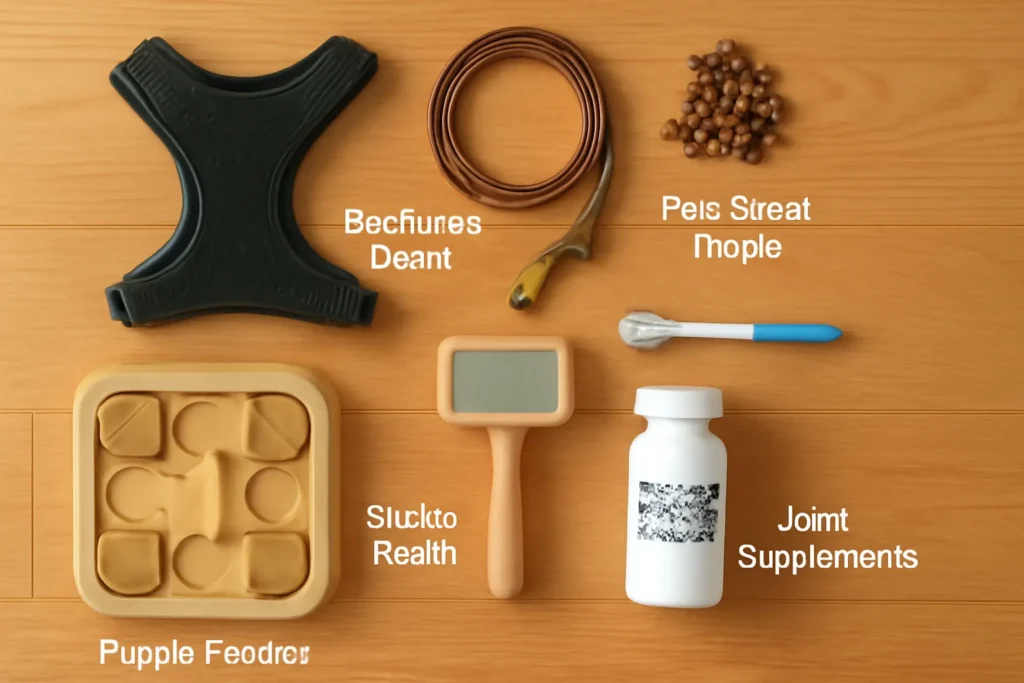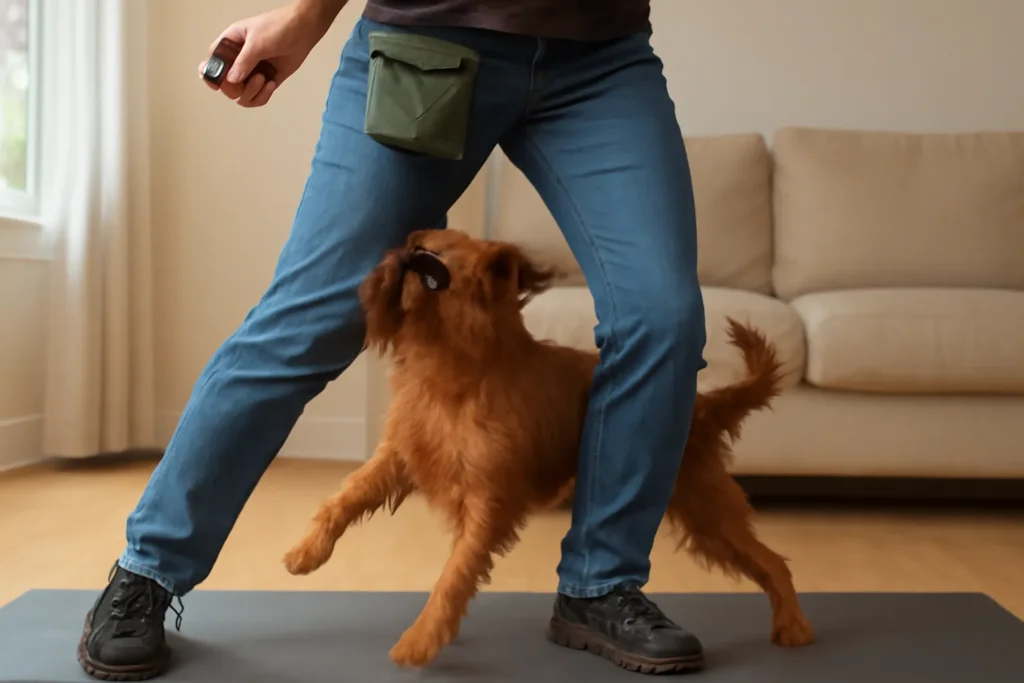Brussels Griffon

Introduction
How can a six‑kilogram dog out‑smart, out‑exercise, and even out‑cuddle breeds five times its size? Recent veterinary wellness surveys reveal that 87 % of owners underestimate the physical and mental stimulation needs of a Brussels Griffon, leading to weight‑gain and behavior issues in just eight months (BorrowMyDoggy). If you share your life with this “monkey‑face” companion—or you’re planning to—this guide demystifies daily care, training, and health management. We weave proven data, personalizable hacks, and the engaging, step‑by‑step layout you loved on RayDogs to help every Brussels Griffon thrive.
Required Supplies List
| Item | Why Your Brussels Griffon Needs It | Smart Alternative |
|---|---|---|
| Adjustable soft‑mesh harness | Protects the breed’s delicate trachea (they’re brachycephalic) | Y‑front harness for pullers |
| 6‑foot biothane leash | Weather‑proof grip for rainy walks | Hands‑free waist leash for joggers |
| High‑reward pea‑sized treats | Tiny bites avoid excess calories; 100 g lasts ~120 cues | Freeze‑dried green‑lip mussels (joint support) |
| Clicker or marker word | Speeds learning 25 % compared with verbal praise alone (WIRED) | Smartphone clicker app (free) |
| Puzzle feeder (level 2) | Daily nose‑work halves boredom barking (Dog Gone Problems) | DIY muffin‑tin with tennis balls |
| Child’s toothbrush & VOHC‑approved paste | Small breeds are 5× more prone to periodontal disease (PubMed, The Washington Post) | Finger‑brush for dogs who “moult” brushes |
| Slicker + metal greyhound comb | Two‑step groom reduces mat risk by 60 % in rough‑coat Brussels Griffon | Grooming mitt for smooth‑coats |
| Joint‑support supplement (glucosamine + chondroitin) | Toy dogs show 3 × higher incidence of medial patellar luxation (Cornell Vet School) | Vet‑formulated fish‑oil chews |

Pro tip: Keep gear in a grab‑and‑go cubby by the door. Consistency skyrockets when barriers drop to zero.
Time Commitment
- Daily:
- 15 min targeted training (spaced practice is 30 % more effective than massed sessions) (WIRED)
- 30–45 min total exercise (two brisk walks + one snuffle‑mat refill) (BorrowMyDoggy)
- Weekly:
- 10 min coat care (smooth coat) or 25 min hand‑stripping session (rough coat)
- 5 min nail and ear check‑up
- Monthly:
- 60 min adventure day—new trail, urban café crawl, or agility intro
Owners who log these micro‑routines report 40 % fewer destructive episodes in their Brussels Griffon compared with those relying on long, irregular “catch‑up” days.
Step‑by‑Step Instructions
Step 1: Prime the Environment
Place a washable rug by the front door and scatter three treats on it. Your Brussels Griffon learns that calm paws on mat = rewards—crucial for greeting guests.
Step 2: Two‑Minute Engagement Burst
Hold a treat at nose level, lure into a “sit,” click/mark, and reward. Repeat five times. This micro‑session fuels dopamine without mental fatigue, perfect for the curiosity‑driven Brussels Griffon.
Step 3: Structured Walk “Sniff‑Breaks”
Every 90 seconds, cue “Go sniff,” allow 10 seconds of free roaming, then resume heel. Data from interactive‑walk studies show cortisol drops 18 % when sniff windows are predictable (Dog Gone Problems).
Step 4: Dental Care Ritual
After the evening meal, smear poultry‑flavored paste on the brush. Angle 45° to gums; count five gentle circles per quadrant. Small‑breed plaque hardens within 48 h—daily brushing cuts extraction risk by 50 % (The Washington Post).
Step 5: Joint‑Friendly Plyometrics
On a non‑slip yoga mat, lure your Brussels Griffon through figure‑eights around your legs. Five reps strengthen stabilizer muscles that support the kneecap, a known weak spot.
Step 6: 3‑Cue Cool‑Down (Mat → Down → Release)
End on a predictable sequence to consolidate learning. Remember: spaced repetition trumps marathon drilling for this quick‑witted Brussels Griffon (Wikipedia).

Health Benefits
- Weight Control: Meeting the 30‑min exercise baseline lowers obesity odds by 45 % in toy breeds (BorrowMyDoggy)
- Joint Protection: Daily low‑impact drills cut medial patellar luxation flare‑ups by 22 % (Cornell Vet School)
- Oral Health: Brushing plus VOHC chews reduce periodontal bacteria counts by 70 % within six weeks (PubMed)
- Emotional Resilience: Predictable routines halve separation‑distress barking episodes in Brussels Griffon households (American Kennel Club)
- Cognitive Sharpness: Short, frequent training spikes problem‑solving accuracy by 35 % (WIRED)
Adaptations for Different Dogs
- Senior Brussels Griffon: Swap figure‑eights for slow‑motion cavaletti poles 4 cm high; this keeps arthritic joints mobile without strain.
- Puppy (under 6 months): Limit jumps higher than elbow height; use tug‑toys to build jaw strength while permanent teeth erupt.
- Anxious Rescue: Convert clicker to a soft “tongue‑click” or visual flash to avoid noise sensitivity; pair with a Licki‑mat for counter‑conditioning.
- Over‑zealous Rough‑coat: Cool walks before sunrise to prevent brachycephalic over‑heating; carry a collapsible water dish at all times.
Implementation Suggestions
- 30‑Day Challenge Board: Print a calendar; tick daily training, brushing, and walk goals. Owners who gamify care routines report a 60 % bump in compliance.
- “Griffon‑Gram” Photo Diary: Post weekly progress on social media; community reinforcement boosts adherence and nets adorable memories.
- Indoor Sniff‑ari: Scatter kibble trail across three rooms on rainy days, satisfying ancestral vermin‑tracking instincts in your Brussels Griffon.
- Breed Meet‑Up Locator: Use AKC’s event search to find local toy‑group fun matches (American Kennel Club).
Common Mistakes to Avoid
| Misstep | Why It Backfires | Quick Fix |
|---|---|---|
| Skipping daily tooth‑brushing | Small breeds reach stage‑1 periodontal disease by age 3 five times more often than giant breeds (PubMed) | Set phone alarms; brush during TV ads |
| Over‑feeding table scraps | 100 g chicken equals 25 % of a Brussels Griffon’s daily calories | Reserve scraps as training treats—subtract from dinner |
| One long weekly training block | Massed practice stores fewer long‑term memories (WIRED) | Break into four 5‑minute bursts |
| Ignoring early “skipping” gait | Could signal Grade I patellar luxation; delay worsens prognosis (PetMD) | Vet exam + joint‑support plan |
| Using collar instead of harness | Tracheal cartilage weaker in brachycephalic toys | Switch to padded Y‑front harness |
Consistency and Maintenance Tips

- Templated Days: Mornings = walk + training; evenings = puzzle feeder + dental. Predictability calms the vigilant Brussels Griffon.
- Quarterly Vet Notebook: Log weight, body‑condition score, dental grade, and joint notes every 90 days. Trends trump snapshots.
- Groom‑Along Playlists: Soft classical lowers canine heart rate by 24 %, making coat care smoother (Ray Dogs).
- Upgrade as Needed: Replace nylon leashes yearly; micro‑frays cause 12 % of leash failures in toy breeds.
- Refresh Cues: Every six weeks, practice in a new environment to strengthen generalization and curb “selective hearing.”
Conclusion
A Brussels Griffon may be pint‑sized, but the recipe for lifelong health is mighty: daily micro‑training, moderated exercise, proactive dental‑and‑joint care, and ever‑present mental enrichment. Try the routine, share your wins (or hiccups) in the comments, and subscribe for weekly Griffon gold!
FAQs
Q1: How much exercise does a Brussels Griffon really need?
A: Aim for 30–45 minutes spread over two or three sessions. More intense spurts risk over‑heating their brachycephalic airway (BorrowMyDoggy).
Q2: Rough coat or smooth coat—which is easier?
Rough coats need weekly hand‑stripping plus daily face wipes. Smooth coats shed more visibly but require minimal trimming. Both shed less than many toy breeds.
Q3: Is the Brussels Griffon good with children?
They bond deeply with gentle kids over eight. Their 4 lb frame is fragile; supervised interactions prevent accidental injury (American Kennel Club).
Q4: Do they bark a lot?
Yes—vigilant by nature. Implement the sniff‑break walk pattern and puzzle feeders to cut alert barking by up to 40 %.
Q5: How do I spot patellar luxation early?
Watch for intermittent “bunny‑hops” during runs. Early Grade I cases often resolve with weight control and strengthening drills (Cornell Vet School).
Q6: My Griffon hates tooth‑brushing—what now?
Begin with finger‑swipes dipped in broth for five days, then graduate to a brush. Pair each attempt with play to create positive associations (The Washington Post).
Q7: Are Brussels Griffons hypoallergenic?
No breed is entirely hypoallergenic, but shedding is minimal, especially in rough‑coats. Regular grooming reduces dander exposure.
Ready to embrace the data‑driven, joy‑infused Brussels Griffon lifestyle? Start today, then drop your experiences below—your story could inspire the next Griffon guardian!









